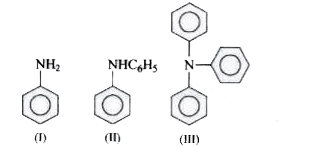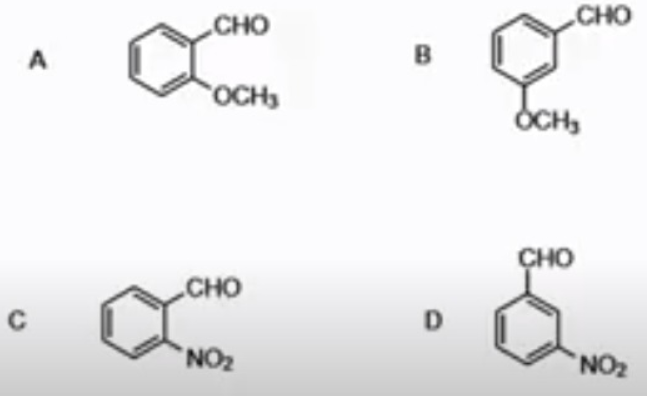Arrange the following in increasing order of their atomic radius: Na, K, Mg, Rb
Mg<K<Na<Rb
Mg<Na<K<Rb
Mg<Na<Rb<K
Na<K<Rb<Mg
The correct Answer is:B
To arrange the elements Na (sodium), K (potassium), Mg (magnesium), and Rb (rubidium) in increasing order of their atomic radius, we can follow these steps:
Step 1: Identify the Group and Period of Each Element
- Sodium (Na): Group 1 (Alkali metals), Period 3
- Potassium (K): Group 1 (Alkali metals), Period 4
- Magnesium (Mg): Group 2 (Alkaline earth metals), Period 3
- Rubidium (Rb): Group 1 (Alkali metals), Period 5
Step 2: Understand the Trend in Atomic Radius
- Atomic radius increases as you move down a group in the periodic table because additional electron shells are added.
- Atomic radius decreases as you move from left to right across a period due to the increase in effective nuclear charge, which pulls the electrons closer to the nucleus.
Step 3: Compare the Atomic Radii
- Rubidium (Rb) is in Period 5 and has the largest atomic radius because it is the furthest down in Group 1.
- Potassium (K) is in Period 4 and has a smaller atomic radius than Rb but larger than Na and Mg.
- Sodium (Na) is in Period 3 and has a smaller atomic radius than K but larger than Mg.
- Magnesium (Mg) is also in Period 3 but is in Group 2, which means it has a smaller atomic radius than Na due to the higher effective nuclear charge.
Step 4: Arrange the Elements in Increasing Order of Atomic Radius
Based on the above analysis, the increasing order of atomic radius is:
1. Magnesium (Mg) - smallest radius
2. Sodium (Na)
3. Potassium (K)
4. Rubidium (Rb) - largest radius
Final Answer
The increasing order of atomic radius is: Mg < Na < K < Rb
---
- Sodium (Na): Group 1 (Alkali metals), Period 3
- Potassium (K): Group 1 (Alkali metals), Period 4
- Magnesium (Mg): Group 2 (Alkaline earth metals), Period 3
- Rubidium (Rb): Group 1 (Alkali metals), Period 5
- Atomic radius increases as you move down a group in the periodic table because additional electron shells are added.
- Atomic radius decreases as you move from left to right across a period due to the increase in effective nuclear charge, which pulls the electrons closer to the nucleus.
- Rubidium (Rb) is in Period 5 and has the largest atomic radius because it is the furthest down in Group 1.
- Potassium (K) is in Period 4 and has a smaller atomic radius than Rb but larger than Na and Mg.
- Sodium (Na) is in Period 3 and has a smaller atomic radius than K but larger than Mg.
- Magnesium (Mg) is also in Period 3 but is in Group 2, which means it has a smaller atomic radius than Na due to the higher effective nuclear charge.
Based on the above analysis, the increasing order of atomic radius is:
1. Magnesium (Mg) - smallest radius
2. Sodium (Na)
3. Potassium (K)
4. Rubidium (Rb) - largest radius
The increasing order of atomic radius is: Mg < Na < K < Rb
Topper's Solved these Questions
- PERIODIC PROPERTIES OF ELEMENTSBOOK - VMC MODULES ENGLISHCHAPTER - PERIODIC PROPERTIES OF ELEMENTSEXERCISE - ENABLE
47 Videos
- PERIODIC PROPERTIES OF ELEMENTSBOOK - VMC MODULES ENGLISHCHAPTER - PERIODIC PROPERTIES OF ELEMENTSEXERCISE - EFFICIENT
50 Videos
- p-BLOCK ELEMENTS-1BOOK - VMC MODULES ENGLISHCHAPTER - p-BLOCK ELEMENTS-1EXERCISE - JEE Advanced Archive
48 Videos
- QUIZBOOK - VMC MODULES ENGLISHCHAPTER - QUIZEXERCISE - CHEMISTRY
30 Videos
Similar Questions
Knowledge Check
Arrange the following in increasing order of basicity.
 AI<II<IIIBIII<I<IICIII<II<IDII<III<I
AI<II<IIIBIII<I<IICIII<II<IDII<III<IArrange the following in increasing order of stability.
 AI<II<IIIBII<I<IIICI<III<IIDII<III<I
AI<II<IIIBII<I<IIICI<III<IIDII<III<IArrange the following in increasing order of basicity :
 AS<Q<R<PBS<Q<P<RCS<R<P<QDP<Q<R<S
AS<Q<R<PBS<Q<P<RCS<R<P<QDP<Q<R<S
Arrange the following in increasing order of the property indicated.
(i) Mg, Al, Si and Na (ionization enthalpy)
View SolutionArrange the following compounds in increasing order of their boiling points
View SolutionArrange the following in increasing order of their heat of combustion :

View SolutionArrange the following in increasing order of heat of hydrogenation :

View SolutionArrange the following in increasing order of their heat of hydrogenation :

View Solution


